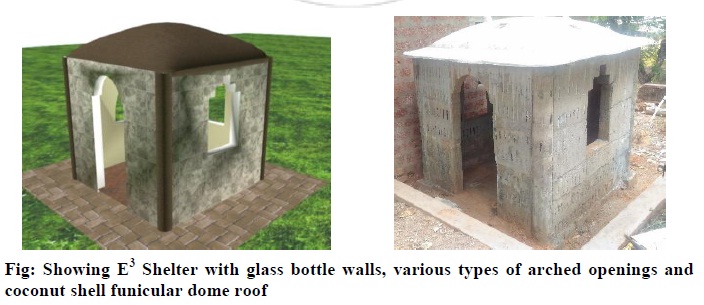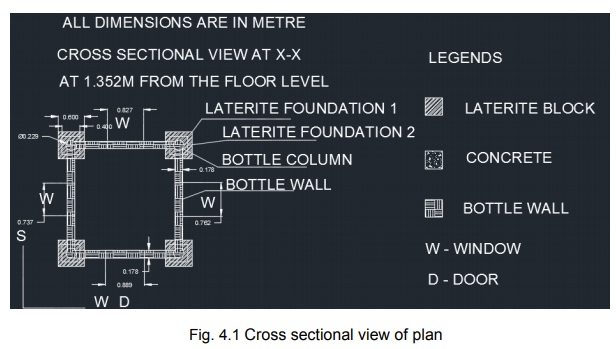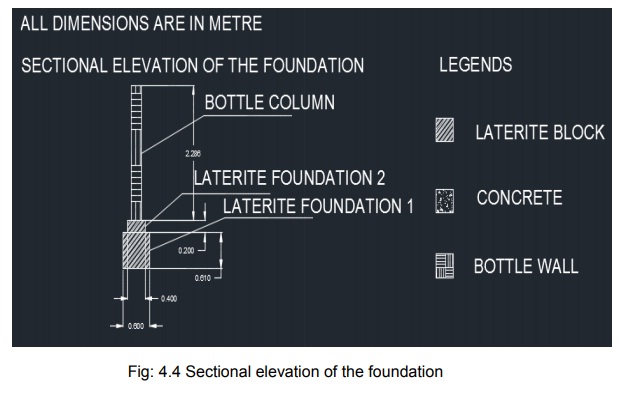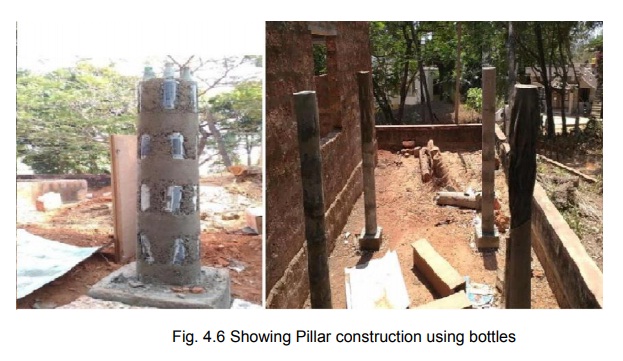





Published on Nov 30, 2023
Shelter being the primary needs of all human beings, aesthetically designed hygienic affordable houses with basic amenities for all sections of the society is the concern of the time. Waste materials being generated at an alarming rate due to the use and throw concept of consumerism, recycling the same for building purposes get importance. Locally available eco-friendly materials, innovative design and methods of construction will drastically reduce the cost of the shelters other than enhancing the look and improvement in the microclimatic conditions such as light and temperature inside the shelter. Arches being the load bearing components various types of arched opening could be explored for the construction to bear the load of the structures and improve the aesthetic look of the building. Glass Bottles of beer and other beverages (WOBO- Waste of Bottles) having enough strength and regular dimensions can be utilized for the constructions with minimal cost in an eco-friendly manner to give enough light, thermal insulation and eco-friendly environment for the shelters.
Funicular dome structures being self-load bearing structures with discarded coconut shells can also be used to make roofs without any steel bars reinforcement. By doing this, it will not only benefit the low income people providing an E3 - economical, energy efficient, eco-friendly shelter but also helps in keeping the environment clean by recycling the materials.
Fig: Showing E3 Shelter with glass bottle walls, various types of arched openings and coconut shell funicular dome roof

Keywords : E3 Shelter, WOBO shelter (Waste of Bottles), Economic, Eco-friendly, Energy efficientshelters.
The primary objective of the project is to plan, design, estimate and construct an E3 (energy efficient, eco-friendly, economical) shell roofed shelter having various arched openings with Waste of Bottles (WOBO) masonry and coconut shell concrete shell roof to understand the efficiency and performance of the same.
In order to achieve this objective, the layout, plan, design, 3D modelling, estimationand construction of 8’x8’x8’ shelter of empty beer bottles (understanding the various engineering properties from the earlier studies) have been made on existing WOBO pillars erected by previous batch. Innovative approach of using simple waste materials such as discarded empty glass bottles, coconut shells, tyres, cardboards, gunny bags, coconut piths and a lot of scrap materials has been adopted in the centering, moulding and construction of walls, roof and various arches viz: Tre-foil arch, corbelled arch, lancet arch and segmental arch for windows and doors. Fig: showing E3 Shelter with glass bottle walls, various types of arched openings and coconut shell funicular dome roof.
There is no specific criterion followed in the selection of the site for construction. The available site with 10’ x 10’ dimension near the sand pit next to the SADANANDA open air auditorium in NMAMIT Campus, Nitte has been identified for the construction of WOBO shelter.

Before the excavation for the proposed foundation, the site has been cleared of vegetation, brushwood, stumps of trees etc., up to 30 cm below the foundation level. The pits formed due to roots of trees, old foundations etc. has been filled up with soil and compacted ramming it.
A reference bench mark has been established on the existing boundary constructed at the site. The centre lines of the walls were marked by stretching strings across wooden pegs driven at the ends. The centre lines of the perpendicular walls were marked by setting out the right angle with steel tapes for marking dimension of plan 8’ X 8’ square is marked on ground.
The marking done for pillar is excavated up to two feet depth. Excavation is carried out manually by means of pick axes, crow bars, spades etc.
For the construction of Column, the following dimensions and specifications have been designed:
Bottom Base size of column = Square mould of 40 cm x 40 cm
Height of base = 20 cm
Diameter of column = 9 inches
Height of column = 8 feet
Type of coarse aggregate used = 6mm jelly
Type of cement used = OPC
Grade of concrete = M25
The steps followed in the construction of the pillars are given below.
Placed the circular mould enclosed by square mould on base.
Checked the straightness of mould using plumb bob.
Prepared concrete using cement, sand, aggregate in the ratio 1:1:2 and water
Upon this place seven grouted bottles and filled the space with concrete.
Each layer has been tamped with tamping rod very well to prevent formation of honey combing
Then levelled the surface and placed seven bottles again and filled it with concrete.
Same process has been continued up to 8 feet height.
After 24 hours de-moulded the concrete.
Proper curing for 28 days has been carried out to avoid cracking.


The execution and experience of this construction project with empty glass bottles and used coconut shells proved that these waste materials can be effectively utilized for building shelters of utility without compromising on strength, durability, hygiene and aesthetic view without any reinforcement bars. Translucency and thermal insulation of empty glass bottle walls being the known factors are added advantages to provide the required lighting and microclimatic control for the E3 shelter. This technology can be effectively used for construction of bus shelters, Kiosks, traffic posts, toll tax counters, petty shops, public toilets, etc.,
1. Although designing and building of E3 shelter is still an upcoming practice and relatively new methodology of construction, it has enormous uncapped potential in the construction sector.
2. The execution and experience of this construction project with empty glass bottles and used coconut shells proved that these waste materials can be effectively utilized for building eco-friendly, cost effective, energy efficient decent shelters of utility without compromising on strength, durability, hygiene and aesthetic view.
3. Translucency and thermal insulation of empty glass bottle walls being the known factors are added advantages to provide the required lighting and microclimatic control for the E3 shelter. Generally the bottle houses are bio-climatic in design, which means that when it is cold outside is warm inside and vice versa.
4. Re-using the glass bottles as the building materials can have substantial effects on saving the building embodied energy by using them instead of bricks in walls and reducing the CO2 emission in manufacturing the cement by reducing the percentage of cement used.
5. Recycling coconut shells and constructing funicular dome roof can save a lot of energy since they don’t use any steel bars for reinforcement without compromising the stability of the structure. Moreover, these coconut shells or their dent will act as concave lenses for illuminating the room with solar powered LEDs.
6. The construction found to be easy without any skilled labours since the bottles are of light weight compared to the heavy laterite bricks which required additional trimming and finishing.
7. The comparative analysis of the cost estimation with the laterite bricks shelter of same dimension revealed that up to 22% of the cost can be saved in empty beer bottle construction with coconut shell funicular dome roof.
8. Construction cost per square feet using empty beer bottles found to be Rs. 760.54 whereas those for laterite brick shelter is Rs. 971.5, demonstrating a saving of up to Rs. 3.29 per sq. feet construction.
9. It is found that about three fourth of the cost can be saved through the effective participation of the client or community and recycling the discarded materials in construction.
10. The construction cost of E3 shelters of empty beer bottles and coconut shell funicular dome roof with community participation found to be highly affordable to low income family since the cost of construction worked out to be as low as Rs. 255.39 per square feet.
11. This kind of construction can be adopted for construction of Bus shelters, kiosks, Traffic posts, Toll tax counter, small stationary shops, shelter for monuments, public toilets, etc.
Dome shape roof for bigger span can be designed and tested. Thermal insulation properties, temperature variation, photo effectiveness, etc. may be studied. Plan, design and estimate for a low income family house should be made and constructed for proving its efficacy in providing affordable shelter for all.